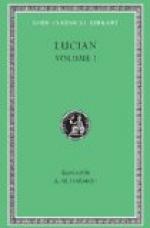Of Custer’s movements, opinions of what he did or should have done, are many and various. The theory first entertained and held for years, but not now tenable nor, indeed, probably held by many, was that Custer reached the ford and attempted to cross; was met by a fire so scorching that he drew back and retreated to the hill in the best form possible, and there fought like an animal at bay, hoping that Reno’s attack in the bottom and Benton’s timely arrival would yet relieve him. The Indians, however, strenuously assert that Custer never attempted the ford, and never got anywhere near it. No dead bodies were found any nearer than within half a mile of the ford, and it seems undoubted that the Indians tell the truth.
When Custer rode out on the bluff and looked over into the valley of the Greasy Grass, he must have seen at once that he had before utterly misapprehended the situation. The natural thing to do would have been to retrace his trail, join Reno by the shortest route, and then, united, have pushed the attack in person or, if then too late for successful attack, he could, in all likelihood, have extricated the command and made junction with Terry. Indian signals travel rapidly, and as soon as Reno was checked and beaten, not only was this fact signaled through the camp, but every warrior tore away down stream to oppose Custer, joining those already there, and now, at least, alert.
It is probable, then, that before Custer could reach the creek valley the Indians had made sufficient demonstrations to cause him to swerve from where he would otherwise, and naturally, strike it, and work farther back toward the second line of bluffs, even perhaps as far back as Captain Godfrey gives the trail. The only thing to militate against this would be the element of time, which seems hardly to oppose it. However he got there, Custer is at last upon the eminence which is so soon to be consecreted with his life’s blood. What saw he? What did he? The sources of information are necessarily largely Indian. At the southeastern end of the Custer ridge, facing, apparently, the draw, or coulee, of the branch of Custer Creek, Calhoun and Crittenden were placed. Some little distance back of them, in a depression, and down the northern slope of the Custer Ridge, Keogh stood. Stretched along the north slope of the ridge, from Keogh to Custer Hill, was Smith’s command, and at the culminating point of the ridge, or Custer Hill, but on the opposite ridge from where the others were placed, were Tom Custer and Yates, and with them Custer himself. Yates’ and Custer’s men evidently faced northwest. It would appear from the Indians’ statements that most of the command were dismounted.




